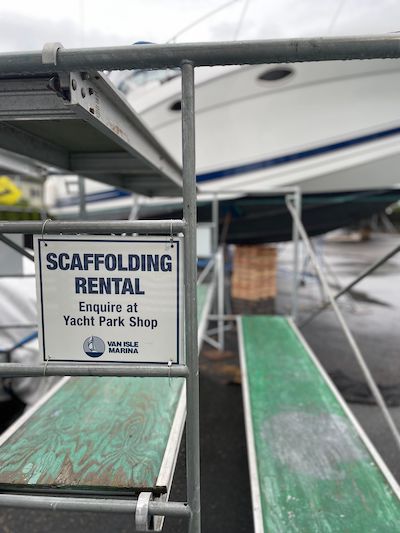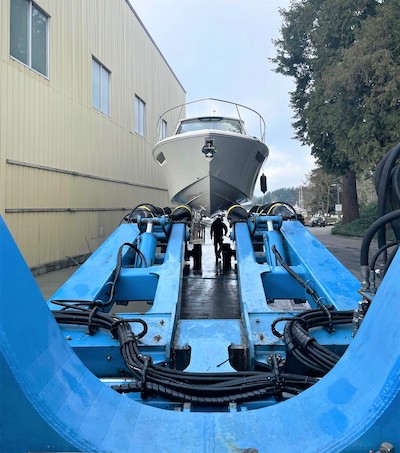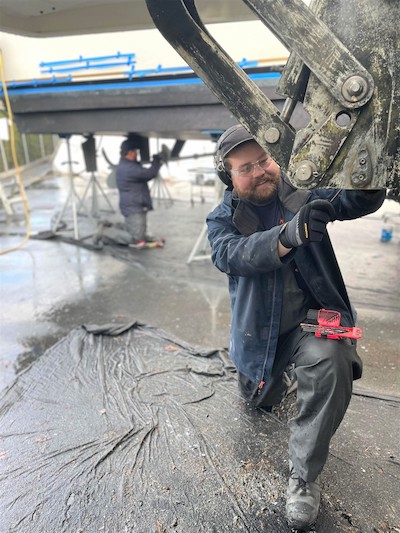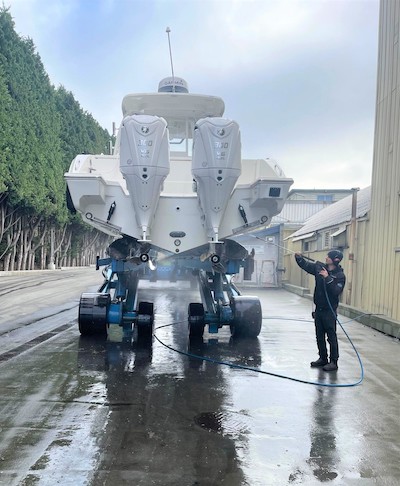Halibut Fishing Around Vancouver Island
What You Need to Know About Fishing for Halibut
If you enjoy fishing, chances are you have dreamed about heading out onto the ocean to try your hand at Pacific Halibut fishing. The waters around Vancouver Island are home to halibut all year round, with abundance during the spring and summer months, making the area a great choice for halibut fishing in B.C.
Fishing for halibut requires a slightly different approach than for other fish species, but once you know the tricks, tips, and equipment required, you’ll be all set for a successful catch.
Where and When to Fish for Pacific Halibut
Pacific Halibut are the largest species of flatfish on the West Coast of Canada. They have a distinctive diamond shape with a white underbelly that makes them easily recognisable.
While the most commonly caught halibut tend to be in the 10 to 50 pound range, they can grow up to 400 pounds and 8 feet long – that would take some hauling in!
Pacific Halibut live mainly on the deep ocean floor, or on shelves at the edge of underwater plateaus. They are bottom feeders, so anglers must target these areas to be successful.
Good locations to fish for halibut around Vancouver Island include:
- Victoria and the southern Juan de Fuca Strait
- The entire West Coast, from Port Renfrew to Quatsino Sound, especially the Clayoquot Sound and Tofino area
- The northern tip of the island from Cape Scott to Port Hardy
Pacific Halibut do not have a migratory cycle, which means they are around throughout the year; however, spring and summer are the best times to fish for them as the weather conditions and temperatures make for a more enjoyable experience.
What Equipment Do I Need for Halibut Fishing?
Where Pacific Halibut live and how they prefer to eat means anglers need some specific equipment. Follow this checklist to make sure you have all the right equipment to make your next halibut fishing trip in B.C. a successful one.
- Rod and Reel: If you will be regularly fishing for halibut, invest in a halibut rod. These are 6 to 7 feet in length, strong, balanced and lightweight, enabling them to withstand the heavy weight and powerful pull of the halibut. A reel with a large handle will make the long reel-in easier and more comfortable.
- Line: Because Pacific Halibut can live 200 to 300 feet underwater, a long and strong line such as an 800 foot long, 60 to 80 pound braided nylon, is essential.
- Hooks and weights: A common halibut rig setup includes a large hook with a hoochie or other attractor, tied to one end of a spreader with strong line. A circular weight is attached to the other end of the spreader to ensure the bait stays on the ocean floor.
- Bait: Halibut use sight and scent to find their food, so aim to create a strong scent trail with live bait. Fresh octopus, herring, crab or cod are good bait options that halibut are attracted to.
- Halibut Spear: Not essential, but a spear will help to bring the halibut in at the surface of the water, before it is able to wriggle off the hook.
Consult your local fishing equipment expert for more information and advice on setting up your halibut fishing rig.
Tips and Tricks for Successful Halibut Fishing
Consider these additional tips and tricks to help you have a successful halibut fishing trip:
- Check your marine charts and depth finder to locate plateaus where halibut are likely to be found.
- Review catch limits and closure notices for the area you are fishing in. Current catch limits on the British Columbia coast for halibut are either one measuring 90 cm to 133 cm in length (head on), or two each measuring under 90 cm in length (head on).
- To attract halibut to your bait, lift and drop the weight regularly to distribute the scent and send out seafloor vibrations.
- Bright teasers or beads will attract halibut to your bait.
Caught a Halibut? Here’s a Tasty Recipe to Try.
Congratulations, your halibut fishing trip was a success and now you have a beautiful fresh fish to serve up for dinner. If you know how to fillet a halibut, you will be able to get the maximum meat from your fish and cook and eat it fresh, or flash freeze it for another day.
The quickest and simplest way to enjoy fresh halibut is pan-fried. This method is easy enough to do right in your yacht’s galley so you can enjoy your haul the same day you caught it.
Pan Seared Pacific Halibut with Lemon Butter Sauce
- 4-6 Halibut fillets
- 2tbsp Olive Oil
- ½ cup butter
- 1 lemon
- Salt and pepper
- Garlic (fresh or powdered), paprika, fresh herbs – optional and to taste
Method:
- Pat halibut fillets with paper towel to dry them off
- Season with salt and pepper and other seasonings of your choice
- Heat olive oil in a skillet, once hot lay halibut fillets in pan
- Allow filets to sear without moving or turning for 3-4 minutes (this prevents the fish from falling apart when you turn it)
- Flip fillets and cook for additional 2-3 minutes
- Remove fish from pan and keep warm
- Reduce the pan to medium heat. Add butter, allow to melt and cook until light brown
- Add juice of 1 lemon and simmer until liquid is reduced by half
- Serve halibut fillets drizzled with lemon butter sauce sprinkled with your choice of fresh herbs
- Serve with steamed veggies or a crisp salad
Prefer something different? Choose from this list of 10 quick and delicious halibut recipes.
Go Halibut Fishing in a New Yacht from Van Isle Marina
Van Isle Marina is ideally placed to be your base for a halibut fishing trip. Located in Sidney, B.C. on the southeastern corner of Vancouver Island, many halibut fishing grounds are within easy reach of our full-service marina for a single or multi-day trip.
Need a new yacht to access those halibut fishing hotspots? Our knowledgeable yacht sales team can find you the perfect vessel with room to pull in a big fish. Contact us today for more information.




 Maintenance?
Maintenance?